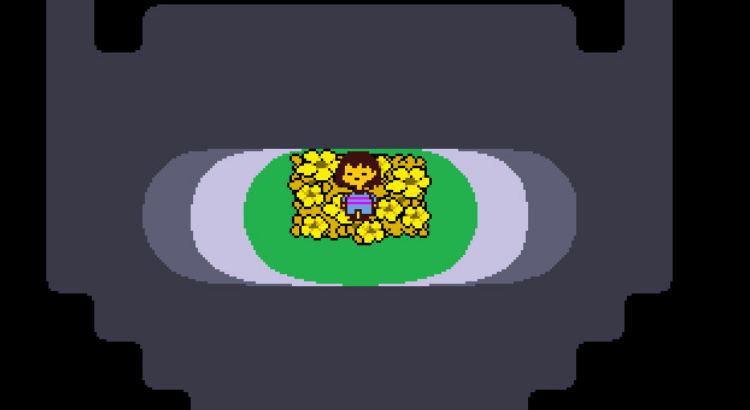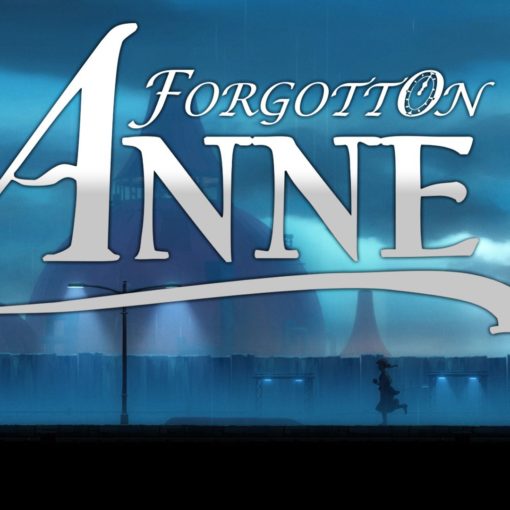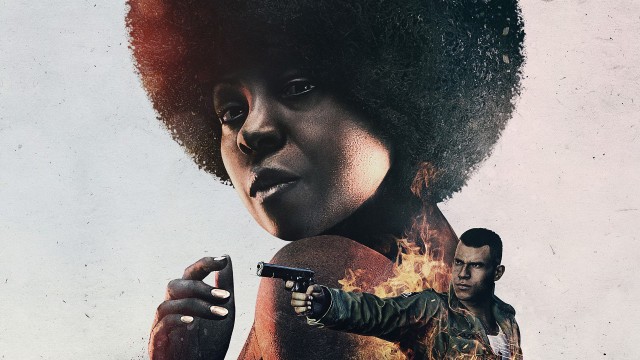In the first part of this study of Telltale Games’ The Walking Dead, I questioned whether the Bechdel Test was the best benchmark for judging whether or not a piece of media had something to offer in terms of good female characterization. Is the Bechdel Test enough, or does even this bare minimum set the bar too low?
In this second part, I’ll be looking at some of the games’ other character, particularly Clementine, in an effort to delve deeper into the presentation of women in a game praised for its characterization and narrative strength.
In terms of major female character, The Walking Dead actually has a lot to offer. Not only do we have Clementine, who is a fascinating lead in her own right, but also Christa, Bonnie and Shel from 400 Days, Lilly, and Katjaa, all characters who not only serve important functions in terms of story, but also boast their own narratives and backgrounds. Some might argue for Carley’s inclusion here, but I addressed her last time, due to heavy reliance on tropes for the creation of her character.
When these women — including Clementine — are separated out from the rest of the women in the games, one strong connection becomes clear: these women, with the exception of Bonnie, are all developed in terms of family and family connections (and one could even argue that Bonnie’s emotional affair and its aftermath puts her in that category). While I don’t think it’s fair to say they are defined by family, as a group, or serve only that role, family is a strong element in the narrative of each of these characters all the same. Of course, family is a recurring theme in all the iterations of The Walking Dead, both natural and created. In the apocalypse, families are built as well as born, and Kenny, for instance, is as much defined by family as Katjaa, and familial considerations also deeply affect several other male characters, such as Omid, and of course, Lee. But Ben and most of the major male characters from 400 Days are not largely defined by their families, and arguments can be made for Chuck and some others. Though their families may come up, there’s a lot more to them, while Lilly is the only one of the above-named women with major concerns outside of family.
Now, these women do have either family members to protect or search for, whereas most of the men mentioned do not, though I’m not sure that saves anyone, considering the game was designed that way. Another Carly-type figure, but without the love interest extras, would have added a great deal to the game, and season two has not laid the groundwork for any strong female relationships.
With that in mind, let’s look at the individual characters.
Lilly: Lilly is most certainly defined by her family ties, considering her father and everything that happens with that storyline is an integral part of her character. Considering she rarely seems to speak to the other women in the group, she barely even passes the Bechdel test in that sense, but she’s certainly a rounded character, so we can let it slide. However, when she’s in her father’s shadow, she seems to exist only to keep him safe, and once that’s taken from her, she turns that energy into keeping the group safe, which means she’s relegated to the role of caregiver, albeit a very cranky, bossy caregiver… until she turns into a murderer.
As distasteful as I find Lilly, I want to like her in this sense. She was in the military, she’s tough, she can take care of herself, and she’s not afraid to go toe-to-toe with the men, but it’s hard to tell when leadership is leadership or when it’s continuing a standard role for women in media.
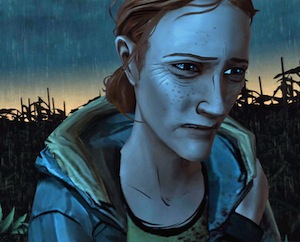 Bonnie: Alas, poor Bonnie. Not only does she not even pass the basic test, but she’s the other woman who accidentally kills the wife. Despite that, however, with her past as an addict, she has potential, and I’m interested to see what comes of the 400 Days cast later in the story, since Bonnie always goes with Tavia to join the other survivors. Something’s clearly planned for her. Let’s hope it’s a story that manages to escape some tropes.
Bonnie: Alas, poor Bonnie. Not only does she not even pass the basic test, but she’s the other woman who accidentally kills the wife. Despite that, however, with her past as an addict, she has potential, and I’m interested to see what comes of the 400 Days cast later in the story, since Bonnie always goes with Tavia to join the other survivors. Something’s clearly planned for her. Let’s hope it’s a story that manages to escape some tropes.
Shel: Shel should be a shining example of women in fiction. She has a healthy female friendship and seems to pull her weight in her community, but she is heavily defined by her relationship to her younger sister. Caring for Becca and making sure the environment is safe (for Becca), while keeping track of Becca’s mental health, cuts through her every conversation and decision. Becca, I think, has the potential to be more interesting, because despite Shel’s longing for Becca to have normal experiences, and despite a narrative that is a maze of moral nad ethical questions, there just isn’t much to her.
Katjaa: Katjaa’s tough. She is very much a mother, and her story is told almost completely in terms of her family, and she’s the only woman who doesn’t fight…but her story is so tragic, and she herself actively changes over the course of the story, so honestly, I find Katjaa a well-rounded, intriguing character. She is gentle, but tough when she needs to be (until the worst happens), she needs hope to keep going, and she grows frustrated with her hotheaded husband. Katjaa may be one of the most realistic characters in the entire series. Bravo.
Christa: Christa, too, is a strong woman, and while defined by her relationship to her man (and what happens with that), she seems to defy a number of tropes. She is the tougher one in the relationship (maybe one of the toughest people encountered), as well as taller than Omid. She is a caregiver, but a cold one, at first simply because she seems to not be an overly warm person, and later due to things she’s endured.
What’s interesting about Christa, though, is that despite us knowing right away that she’s tough, most players choose to save Christa over Omid, enough though Omid was hurt, and the rare player who saves Omid gets yelled at for not saving a woman first (by Omid, who has clearly never met his girlfriend the Amazon). In moments like this, I feel like someone wants to take the best parts of the game for women and find devious ways to undermine them.
I am pretty sure that’s not happening (I hope that’s not happening), but at times I get a few feelings.
Some characters who serve middle roles unfortunately have been left out of this analysis, like Molly and Brie, but as season two develops, perhaps there will be room for further exploration. And so that leaves us with Clementine, who is already considered by many one of the best female characters in a video game, and one of the best child characters, and for good reason. Clementine is a rounded, realistic child character who doesn’t exist just to much things up, and though I may be uncertain, as yet, of the direction they’re going in season two, I cannot deny that I’ve adored Clementine since we first met her in the treehouse.
But so much of that is because she is a cute little girl. A resourceful one, sure, and a quick study, but a cute little girl all the same. Young girls, it seems, are always the most competent (see also: Harry Potter; see also: the other Walking Dead fictions, ruled by Carl the Incompetent), and that is something worth looking into on its own, but right now, I’m focused on Clementine, and I have one question:
What if Clementine was a boy? Indeed, the major problem with the proliferation of fatherly role games recently is that we tend to get the same dynamic: father figure/female child. Heavy Rain, of course, offered an exception, but like Quantic Dream’s fantastic Beyond Two Souls, Heavy Rain is criminally undervalued. Instead, we look to BioShock, The Last of Us, and here, The Walking Dead, as examples of gaming’s brave new threshold: the daddy sim. And all of these games involve a girl who must be cared for. That these girls exhibit varying strengths and can at times care for themselves is a benefit, but the base dynamic is still the same: male protector/delicate female. Not female protector/male child (or even female child). When we do get that in games, it’s temporary. In The Last of Us, Joel loses his female companion. In The Walking Dead, Katjaa-the-caregiver cannot protect her son, and without him, she ceases to exist. Christa travels for a while with Clementine, serving in this capacity, but most of that’s off-screen; as participants in that relationship, we get only a few weary moments before everything goes to shit.
So what if Clem was a boy? Well, we’ve seen that; Rick and Carl is the relationship the original Walking Dead is built on, and in the show as in the comic, the two characters follow similar arcs in some ways: they begin as very young children and are slowly hardened to the realities of the post-apocalyptic world. But the way those relationships with the men in their lives develop is different; Clem’s tender moment with Lee is when he fixes her hair, an image so rare that when it happens in the real world, the internet explodes. Carl’s tender moments with Rick, on the other hand, involve a lot of man-tears and Rick’s concern that Carl can no longer be a kid, something we see echoed in 400 Days with Becca and Shel. In this, then, it seems TWD is more sensitive, but the development is given to a man, not to the female character. Lee is rounded out and given depth when he fixes Clem’s hair and tells her to keep it short, not Clem.
Carl and Clem are both trained in weapons, as well, in their respected stories, but as Carl quickly becomes hardened (and takes care of his sick father when they are alone on the road), Clem, in the beginning of season two, seems bereft of the skills we spent season one teaching her. She has a weapon and promptly loses it under tragic circumstances. She cannot make a fire. She whines. Once alone, she yells in the woods (good thing those zombies have situational hearing). She shows almost no caution, no survivor skills, and while show-Carl has definitely pulled some of these stupid moves, in the most reason season he has been carefully molded into a mature, adept survivor, more like Carl in the comics. But he’s had more time, one might argue. We’re in the fourth season of the show, after all, and the comics have been running for years. Of course Carl is a more hardened survivor.
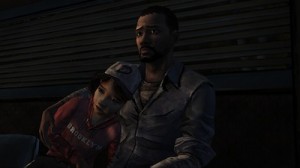 Has he had more time, though? We have a timeline for both stories, thanks to the convenient timeline of pregnancy (and a captioned time-skip in the game). For show-Carl, who has a sister roughly eight months old, less than two years have passed since the beginning of the end. Comics-Carl has a longer timeline, but is also more developed. For Clem? It’s been about two years, and she hasn’t had as many moments of relative stability as Carl. She’s been on the road, in the thick of things, since the hairy beginning, and yet when once she’s on her own in season two, at moments, she seems much like the Clem we first met: smart enough to get into the treehouse, observant enough to help, but not terribly capable. Before long, she’s horribly injured and must deal with the injury in a horrifying, dangerous way.
Has he had more time, though? We have a timeline for both stories, thanks to the convenient timeline of pregnancy (and a captioned time-skip in the game). For show-Carl, who has a sister roughly eight months old, less than two years have passed since the beginning of the end. Comics-Carl has a longer timeline, but is also more developed. For Clem? It’s been about two years, and she hasn’t had as many moments of relative stability as Carl. She’s been on the road, in the thick of things, since the hairy beginning, and yet when once she’s on her own in season two, at moments, she seems much like the Clem we first met: smart enough to get into the treehouse, observant enough to help, but not terribly capable. Before long, she’s horribly injured and must deal with the injury in a horrifying, dangerous way.
Comics-Carl, too, has suffered a grievous injury, and I think these parallels again reveal some trope-ish development along gender lines. Carl’s injury is horrifying, but it’s treated as gross, a thing of wonder. How could he survive? A more recent arrival on the scene finds his injury fascinating and wants to stare at it.
Clem’s injury, on the other hand, is treated in two ways. First, it shows us how vulnerable she is—so vulnerable a group of wary survivors is willing to help her, poor pitiful child that she is, even though they think she has probably been bitten by a zombie (except for that aforementioned woman, of course, who wants to refuse her). And the moments with Clem’s injury? Are played for horror. There’s nothing fascinating here. This is a grim, horrific moment of extensive pain and torture, a moment some found over the top. Yes, Clem finally rises to the occasion when she has to, but her handling of her own injury, while showing us how capable she actually is when she has to be, also reminds us that she is a small, vulnerable girl. Carl, on the other hand, is almost never treated as delicate or vulnerable, even when he’s on the brink of death. And once he recovers? He’s insistent on showing how hard he is, how emotionless.
Both depictions are problematic in terms of gender-based tropes, though what happens with Clem going forward will be interesting to watch.
And, finally—though this may be an unpopular question to raise, it is something of a curiosity for me—season one ends with Clem alone. At that point in time, we couldn’t be sure about Omid and Christa, so Telltale left us with that horror movie standard, the lone girl who tugs at our heartstrings. As excited as I was even then at the prospect of playing as Clem, I still saw the machinations in that ending, and a small part of me wonders… what if Lee had been the lone survivor instead? What if Lee had failed in his self-imposed mission of taking care of this girl? What would that have done to us, as players, and to Lee as a character? It would have produced a different game, for sure, but after I finished wiping my tears, I’d have played it with just as much enthusiasm, if only to see where it lead.


